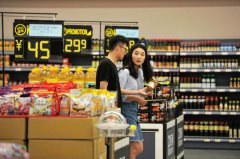Restaurants, delivery apps still at odds as demand grows
Diners got used to delivery during the pandemic, and the habit may stick long after dining rooms reopen
April 20, 2021, 11:19 AM
6 min read
Jeffray Gardner, the owner of Marsatta Chocolate poses with a bag of cocoa beans at his company's office in Torrance, Calif., Sunday, March 28, 2021. Restaurants and delivery companies remain uneasy partners, haggling over fees and struggling to make the service profitable for themselves and each other. Gardner says he probably loses money on the one or two delivery orders he gets each day. But he’s still happy to work with delivery companies because they help him reach a wider audience. (AP Photo/Damian Dovarganes)
Diners got used to delivery during the pandemic, and the habit may stick long after dining rooms reopen. But restaurants and delivery companies remain uneasy partners, haggling over fees and struggling to make the service profitable for themselves and each other.
Companies like DoorDash and UberEats helped many restaurants stay in business during lockdowns, allowing diners to stay in and still order out. But that convenience came at a price: Delivery companies can charge commission fees of 30% or more per order, hurting restaurants’ already meager profits.
Some restaurants, fed up with the fees, have since started their own delivery or dropped off the platforms altogether. Delivery companies are trying to keep them in the fold with lower-priced services and relief funds. But they’re not making money either.
“The relationship was bad, and it didn’t get better with the pandemic,” said Karan Girotra, a professor at Cornell University’s Johnson College of Business.
Girotra said delivery can be profitable in dense neighborhoods, where multiple orders can be delivered quickly and cheaply. But in sprawling suburbs, the cost of shuttling food gets too high.
“The economics don’t work out, so the delivery companies have to squeeze someone,” he said. “They have to squeeze the restaurants, the customers or the people working on these platforms.”
Figuring out how to make delivery profitable could be crucial in the coming years. Delivery was already growing before the pandemic, but it surged worldwide during lockdowns. Online orders for home delivery more than doubled in the U.S., Russia and Canada last year, and jumped around 30% in France, Germany and Spain, according to NPD Group, a market research company.
In a recent survey, the National Restaurant Association found that 60% of U.S. adults — and 71% of millennials — said they’re more likely to get delivery now than they were before the pandemic. But it's unclear how many people will stick to delivery once the pandemic is over and they can dine in again.
Robbin Swaney, a retiree in Walker, Michigan, said she and her husband started getting delivery about once a week from Uber Eats early in the pandemic. At the time, they wanted to help local restaurants, but they have also come to like the convenience.
“We’ll keep doing it,” Swaney said.
Some restaurant owners still welcome delivery companies as partners. Corey Kaplan, who owns Corey’s NYC Bagel Deli in downtown Chicago, said DoorDash expanded his reach when his usual traffic of office workers dried up. The company lowered his commission fees and even provided bags.
“DoorDash singlehandedly saved this store,” said Kaplan, whose delivery orders now make up 70% of his sales, up from 20% before the pandemic.
Chocolate maker Jeffray Gardner says he probably loses money on the one or two delivery orders he gets each day at Marsatta Chocolate in Torrance, California. But he’s still happy to work with delivery companies because they help him reach a wider audience. Last year, he even drove for DoorDash and UberEats to make extra cash and meet other local restaurant owners who might stock his chocolates.
But many restaurant owners say they can’t make the math work.
Evelyn Shelton, the chef-owner of Evelyn’s Food Love in Chicago, says the food she makes in her 40-seat restaurant, like fried lobster, is expensive, so her margins are already slim. She only briefly tried third-party delivery before deciding to focus on catering to survive the pandemic.
“Doing a revenue share with someone who hasn’t bought any food or paid any labor doesn’t make sense to me,” she said. “We’re too tiny to give away all the profits.”







